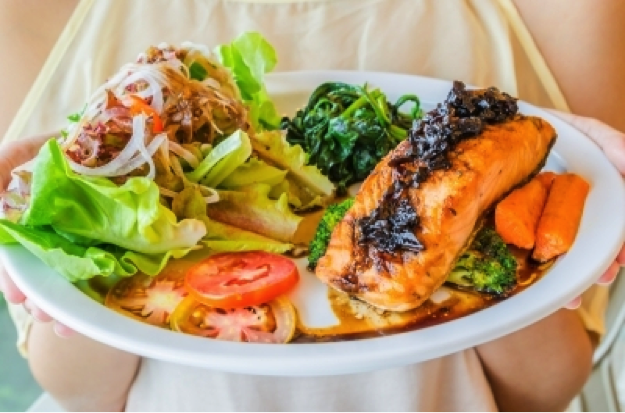Restaurant Trends and How They Influence Design

The National Restaurant Association in fall 2013 surveyed about 1,300 chefs (members of the American Culinary Federation) to find out what they believed would be the hot trends in 2014 and the coming months in food, beverages, cuisines, and culinary themes.
The survey found that the top trends included (but were not limited to):
- Meats, seafood and produce that are locally sourced
- Environmental sustainability, including sustainable seafood
- Gluten-free cuisine
- Children’s nutrition
- Non-wheat noodles and pasta such as rice, buckwheat and quinoa (see the gluten-free trend, above)
- Items “branded” by a farm
- Reducing food waste by using all of the animal or plant
- Grazing (small-plate sharing and snacking rather than eating a traditional large meal)
- Fruits and vegetables for children’s side items
- Smaller and half-portions
If you’re serving seafood such as salmon, the trend today – what your customers want – is to absolutely make sure it’s freshly caught and, if possible, caught locally.
These cuisine trends lead naturally to design trends for your space.
We’ve found that diners today want an “authentic” experience to go along with their “authentic” meals. This means they’re more willing to share this experience with their fellow diners, calling for a more open and communal dining experience (for Millennial-aged diners, in particular). Hence, some restaurants are opting for communal dining tables.
Designing a space so that the kitchen is open – without causing a distraction for your chefs and cooks – and a focal point for the restaurant, also is becoming more popular.
Openness and communal dining also are seeing a growth in what is known as a “fast casual,” environment, allowing customers to also see their food being prepared as they order it (think Chipotle Mexican Grill restaurants).
So what does this mean when it comes to these trends influencing restaurant design today?
- If your restaurant provides services to an upscale clientele, be aware that they’re looking for a more causal feel as they dine.
- If you don’t have an open kitchen, or one where diners can see their meals being prepared, consider at least having an “exhibition” cooking area where patrons can watch your chef at work. (All the better if your chef is well known.)
- As you opt for that casual/upscale look, remember that your diners want to feel as if they belong there, as if they’re headed to their favorite neighborhood eatery. (If possible, get to know your regulars and call them by name.)
Seriously consider hiring an interior designer, particularly one – such as Jones Baker – who has considerable experience designing restaurant spaces.
Whomever you choose to help design your space, make sure he understands how restaurants operate – how food flows from kitchen to your diners’ tables. He should understand this flow from both your employees’ as well as your customers’ point of view.
For more information on Jones Baker’s restaurant design expertise, give us a call at 214-426-5600 or send us an e-mail via our online contact form.
Image courtesy of mrsiraphol/FreeDigitalPhotos.net
You must be logged in to post a comment.

Leave a Reply